Step by Step instructions to install SCCM
SQL Configuration
Add SCCM computer object in local admin group on SQL server
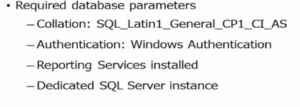
Enable Named Pipes in SQL Configuration
There are two options for SQL configurations,
- SQL on a different Server with a dedicated SQL server instance.
- SCCM server, ensure there is enough memory and you create multiple drives for SCCM data, SQL Backup, SQL TempDB and SQL Transaction logs
- Ensure that you configure your min/max memory based on Microsoft best practice. I have created a spreadsheet with a formula that will calculate based on number of clients, cores etc.
SCCM IIS Components
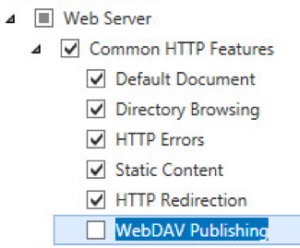
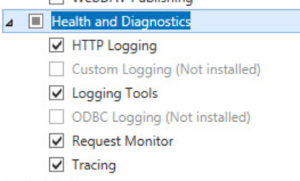
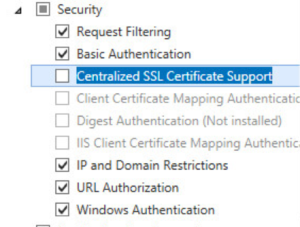
Install BITS and Remote Differential Compression
Install .net 3.5 and WCF Activation
Install WSUS Service Admin Console only use PowerShell
Install-WindowsFeature -Name UpdateServices-UI
Install WSUS on Separate Server which will sync with SCCM
Install Report Viewer
Install SSRS reporting services on either the Primary site server or a separate box, keep in mind how often you will run reports and create reports.
SCCM Installation
SQL Server is configured and ready
Firewalls configured on hosts
No PKI in use at present (Http communication only) – Depends on Environment
Launch the Splsh.exe
Define Site Code, this cannot be changed later.
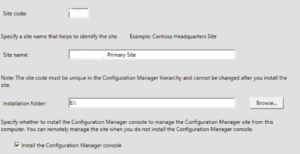
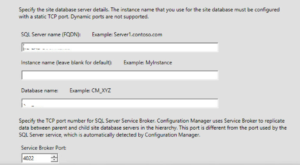

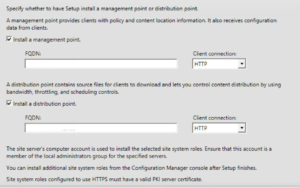
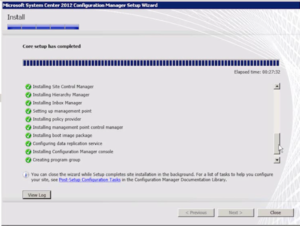
SCCM Installation Completed
Post Installation Task
Create Security roles and permission within SCCM
Configure Default Client Settings – Discuss Client requirements
Verify default management point Settings
Generate Alert When management point is not healthy. Not set by default

Validate Distribution points.
Verify status in Monitoring section.
Enabled Discovery methods
Forest Discovery

This will create the first site Boundary, right click on Boundary and add selected items to new Boundary groups.

Click on Reference tab and click on use this Boundary group for site assignment
Add the site system server.

Enable Active Directory System Discovery
Might want to exclude systems that have not been logged in in pass 90 days or systems that have not had password reset in 90 days.
At this point you can create additional distribution points depending on your environment.
Configure Client Settings
Centrally configurable options that allow admins to granularly control how clients operate in SCCM environment. In addition, you can create additional policies that can be deployed to a specific collections, see sample of policy below
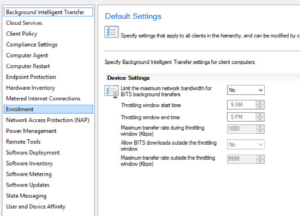
Client Deployment
For push installation that will deploy agent to computers discovered by SCCM, right-click on Sites in Sites configuration and select Client Push installation. In the properties tab ensure you add the logging add the follow command in installations properties (smssitecode=XXX ccmloglevel=0)
Monitor the Agent deployment by running SSRS agent status report summary and details.